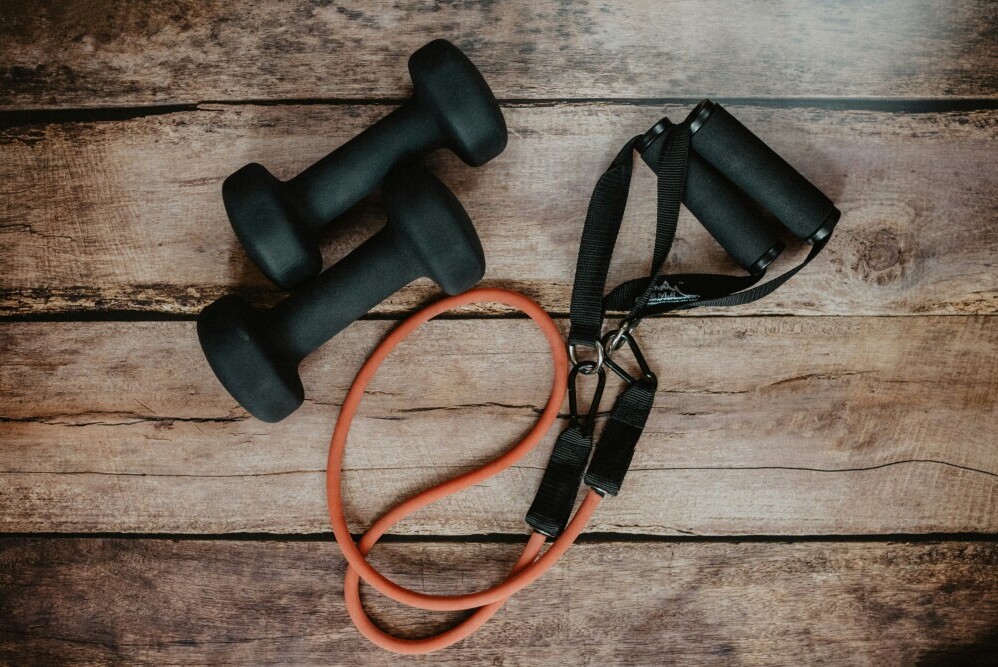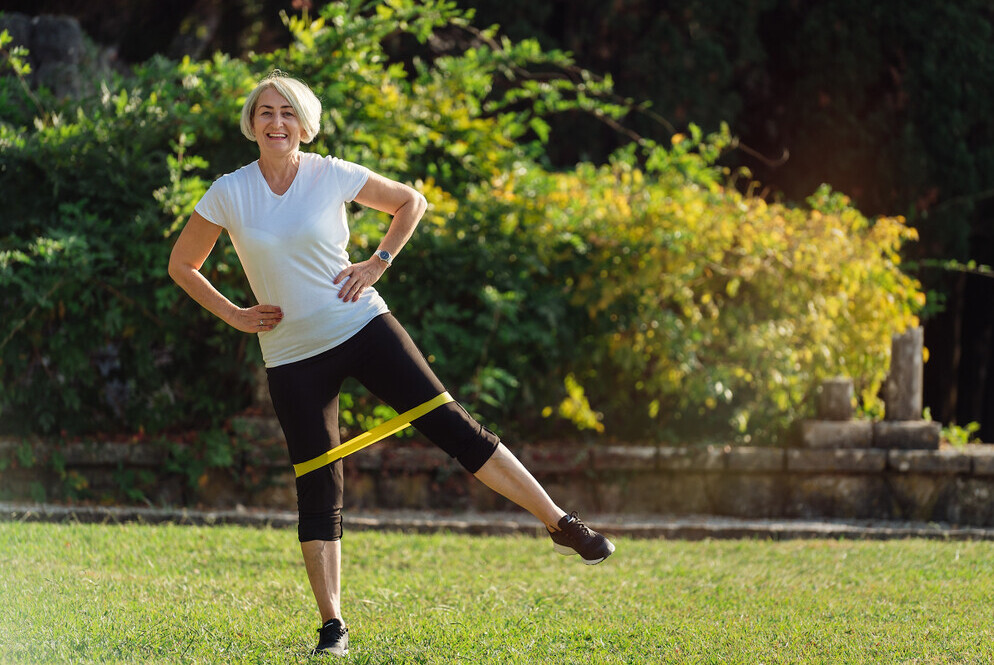If you’re searching for a fun and effective way to stay fit and healthy, balance exercises might be just what you need! These exercises are about more than just preventing falls—they help you stay strong, confident, and active in all aspects of daily life. Adding resistance bands takes your balance training to the next level. These bands are perfect for seniors because they’re gentle on the joints, versatile, and can be used anywhere—from the comfort of your living room to your favorite spot in the garden. Whether you’re just starting your fitness journey or looking to add variety to your routine, incorporating resistance bands into your balance exercises can help improve your stability, increase your strength, and even keep your mind sharp. Ready to boost your balance and enjoy the perks of staying active? Let’s get started!
Balance Exercises for Seniors: Strengthen Stability with Resistance Bands
I’m going to kick things off by talking about why balance is particularly paramount for seniors. Balance exercises play a crucial role in preventing falls, which are a leading cause of injury among older adults. Improved balance not only boosts physical health but also enhances confidence in daily activities.

Incorporating resistance bands into balance training isn’t just about making exercises tougher; it’s also about making them better. Resistance bands add a level of controlled instability that can significantly improve the effectiveness of balance exercises. Plus, they’re incredibly versatile and adaptable to various fitness levels.
You’re going to learn how the elasticity of these bands challenges your muscles in ways that mimic real-life activities, which is exactly what you need to stay on your feet and independent. More than just aiding with muscular strength, resistance bands, when used correctly, can sharpen your proprioception – that’s the sense that helps you know where your body is in space.
If you want to enjoy the golden years with gusto, embracing balance and stability exercises with the added challenge of resistance bands can be a game-changer. And don’t worry too much about whether it’s too late to start; it’s never too late to work on balance.
Key Takeaways
- Balance exercises with resistance bands help improve stability, strengthen the core and lower body muscles, and reduce the risk of falls, which is crucial for seniors.
- These exercises engage both the body and mind, enhancing coordination and stimulating brain activity, which can improve cognitive function and mental sharpness.
- Resistance bands offer adjustable resistance levels, making them safe and suitable for seniors of all fitness levels. They provide a low-impact option that reduces stress on joints.
- Regular practice of balance exercises can enhance overall mobility, allowing seniors to maintain their independence and perform daily tasks with greater ease.

Benefits of Balance Exercises for Seniors
Improving Stability and Preventing Falls
Balance exercises help strengthen the muscles that support your body, such as the core, legs, and lower back, which are essential for maintaining stability. By practicing these exercises regularly, seniors can improve their coordination and reaction time, making them less likely to stumble or lose their balance. This proactive approach significantly reduces the risk of falls, a common concern as we age, and helps keep you safe and independent.
Enhancing Strength and Mobility
Incorporating resistance bands into balance exercises adds a layer of gentle resistance that builds muscle strength and improves joint flexibility. This combination not only enhances your ability to move freely and comfortably but also supports better posture and overall physical function. Strengthening the muscles used in everyday movements, like walking, standing, and bending, makes these activities easier and less tiring.
Boosting Confidence in Daily Activities
As balance and strength improve, so does confidence. With greater stability, you’ll feel more secure doing the things you love, from gardening and walking to playing with grandkids. The fear of falling or losing balance can hold many seniors back, but regular balance exercises empower you to stay active and engage in daily activities with renewed self-assurance. This boost in confidence contributes to a more vibrant, fulfilling lifestyle where you can fully enjoy your golden years.


Fundamentals of Balance Training with Resistance Bands
Diving into balance training without a proper warm-up is like trying to drive a car with a cold engine—it’s not just ineffective, it can lead to injuries, especially for seniors whose muscles and joints need a bit of extra care. Warming up is crucial for getting your blood flowing, loosening up tight areas, and preparing your body for the work ahead. Gentle stretches, light marches, or ankle rolls are excellent ways to start.
Mastering Basic Stances and Movements
Before jumping into complex exercises, it’s important to nail the basics. Simple stances, like standing with your feet shoulder-width apart, create a solid foundation and help you find your center of gravity. Moves like toe-heel raises are excellent for activating the muscles around your ankles, which are key players in maintaining balance.
Incorporating Resistance Bands: The Easy Way
Using resistance bands can enhance almost any balance exercise. These bands add an extra challenge, gently pushing your muscles to work harder and improve stability. For instance, a basic side step becomes a powerful balance-builder when you add a looped band around your legs, increasing the effort required from your core and lower body.
Building a Strong Foundation
The goal is to develop stability gradually, focusing on form and control rather than rushing into higher resistance or more challenging moves. Start with lighter bands and simple exercises to lay a solid foundation, then progress to more resistance as your confidence and balance improve. It’s all about pacing yourself and allowing your muscles to adapt without feeling overwhelmed.
Exploring Targeted Balance Exercises
Once you’ve got the basics down, it’s time to explore a variety of exercises specifically designed to enhance balance using resistance bands. From standing leg lifts to seated marches, these movements can be tailored to your current ability and progressively built upon as you get stronger. We’ll guide you through each step, ensuring you have the right form, support, and adjustments to keep moving forward.
By understanding these fundamentals, you set yourself up for success, creating a balance training routine that’s not only safe but also highly effective at improving your overall stability and mobility.

Effective Resistance Band Exercises for Enhanced Balance
Improving balance is crucial for seniors, and resistance bands are an excellent tool for this purpose. They provide just the right amount of resistance to strengthen muscles without putting extra strain on your joints.
Let’s start with a classic exercise: the resistance band toe tap. Stand behind a chair for support, place the band under one foot, and gently tap the ground with the opposite foot. It might seem easy, but the band’s tension intensifies the workout, engaging your core and stabilizer muscles.
Next, try the side step. Place a resistance band around your ankles and maintain a slight bend in your knees. Step to the side while keeping the band taut. This move targets the hip abductors, which are essential for fall prevention.
No balance routine is complete without standing leg lifts. Attach the band to a stable surface at ankle height, and slowly lift your leg to the side. This exercise strengthens your outer thighs and hips while engaging your abdominals.
For a more advanced challenge, perform the balance pull. Secure the band to a sturdy object at waist height. Instead of pulling with your hands, focus on using your core muscles to maintain balance as you pull the band toward you.
Remember, improving balance takes time, so be patient with your progress. Start with lighter resistance bands and gradually increase the tension as you build strength. Consistent practice will reveal your improvement over time, and that’s where the real progress happens.
Begin with one set of 10-15 repetitions for each exercise and adjust as needed based on your fitness level. With practice, you can modify your routine to suit your evolving abilities.

Maintaining Safety and Preventing Injuries
Your safety is paramount when performing resistance band exercises. Accidents can happen, but taking a few precautions can help reduce risks. Consider having a spotter or supervisor, especially if you’re new to these exercises or have mobility issues.
Understand your body’s limits and avoid overexertion. If an exercise causes pain or discomfort, stop and reassess or modify the movement. The goal is to find what works for you and do it safely, not to follow a one-size-fits-all approach.
Familiarize yourself with basic emergency procedures. Recognize signs of overexertion, such as severe shortness of breath or chest pain, and have a plan to seek help if necessary. Keep your phone or an emergency alert device within reach during your workout and use it if something feels wrong.
By prioritizing safety, you’ll build confidence in your exercise routine. Knowing you’re exercising safely makes it easier to stay committed and integrate these exercises into your daily life. Consistency is key to seeing lasting results.

Tracking Progress and Staying Motivated
Let’s dive into the final, yet crucial, stage of your balance training journey with resistance bands: tracking your progress and staying motivated over the long haul.
First, keeping a log of your balance exercises is incredibly valuable. It’s more than just a record; it’s a tool that shows how much you’ve accomplished and helps you plan your next steps. Document the exercises you perform, the resistance level of your bands, and any improvements you notice. Are you more stable on your feet? Can you hold a pose longer? Celebrate these victories!
Setting realistic goals acts as your roadmap to success. When you hit those milestones, reward yourself. It could be something simple like enjoying a favorite treat, picking up a new book, or sharing your progress with friends. These little rewards keep your motivation alive and well.
To keep your balance routine engaging, consider joining a group class or inviting a friend to join you. The shared experience can be a great motivator and make the journey more enjoyable.
Consistency is crucial. There’s no need to rush or overexert yourself—just keep going. If you miss a day or two, don’t stress. Be kind to yourself and get back on track when you can.
Ultimately, the real reward is not just improved balance but a more active and fulfilling life. Your journey doesn’t end after your first try—continue to strive for improvement and adjust as needed. Here’s to your ongoing health and happiness!
Fun Facts
Did you know that balance exercises can boost your brain power? Engaging in balance exercises with resistance bands not only strengthens your muscles but also stimulates your brain. The coordination required to maintain balance and control the band’s resistance activates multiple areas of the brain, enhancing neural connections. This mental workout helps improve cognitive function, sharpen focus, and keep your mind agile, making it a fantastic way to support both physical and mental health as you age!

Balance Exercises For Seniors Using Resistance Bands: Fitness Goals
Mastering balance with resistance bands is a journey that enhances not just your stability but your overall quality of life. By diligently tracking your progress, setting achievable goals, and staying motivated, you can make significant strides in your balance and fitness.
Now, it’s time to put these insights into action. Start logging your exercises today, set those realistic goals, and celebrate every achievement along the way. Join a group class or invite a friend to make your workouts more engaging and enjoyable. Remember, consistency is key—keep going, even if you face setbacks.
Embrace this opportunity to improve your balance and lead a more active, fulfilling life. Begin today and take charge of your health and well-being. Your future self will thank you for it!
Ready to challenge your balance and strengthen your body? Share your favorite resistance band exercises and tips with our community. Let’s inspire each other to stay fit and active!

Frequently Asked Questions
How do resistance bands improve balance?
Resistance bands add gentle resistance to movements, helping to strengthen muscles around the joints, improve posture, and enhance overall body stability, making them an effective tool for balance training.
What are some simple balance exercises for seniors using resistance bands?
Popular exercises include standing leg lifts, seated marches, side steps, and single-leg stands with band resistance. These moves help target core and lower body muscles essential for maintaining balance.
Do I need any other equipment besides resistance bands for these exercises?
Most exercises only require a resistance band, but some may benefit from a sturdy chair or wall support for added stability, especially for beginners or those with balance concerns.
How long does it take to see improvements in balance with resistance band exercises?
Results vary, but seniors often notice improvements in balance, strength, and mobility within a few weeks of consistent practice. Regular engagement and gradually increasing the challenge can speed up progress.
Can I do resistance band balance exercises if I have joint pain or arthritis?
Yes, resistance bands are gentle on the joints and can be an excellent choice for seniors with joint pain or arthritis. However, it’s important to start slowly, use proper form, and consult with a healthcare provider if you have any concerns.
Stay Active, Feel Good!
Looking for fitness inspiration? Visit our Facebook page packed with tips, tricks, and workout routines tailored for those 55 and older. Join our vibrant community to discover fun ways to stay active, healthy, and happy. Let’s stay active together!


